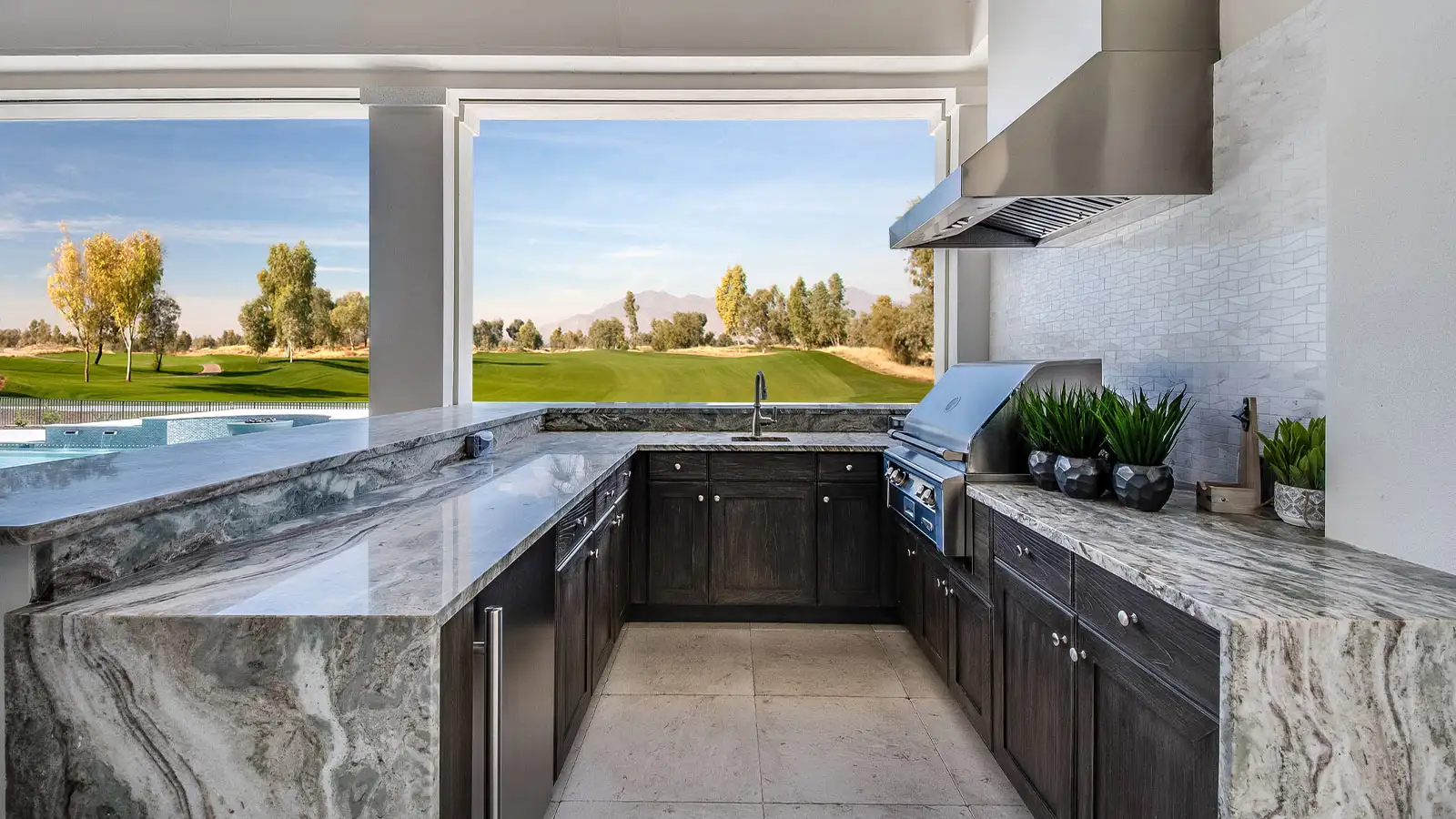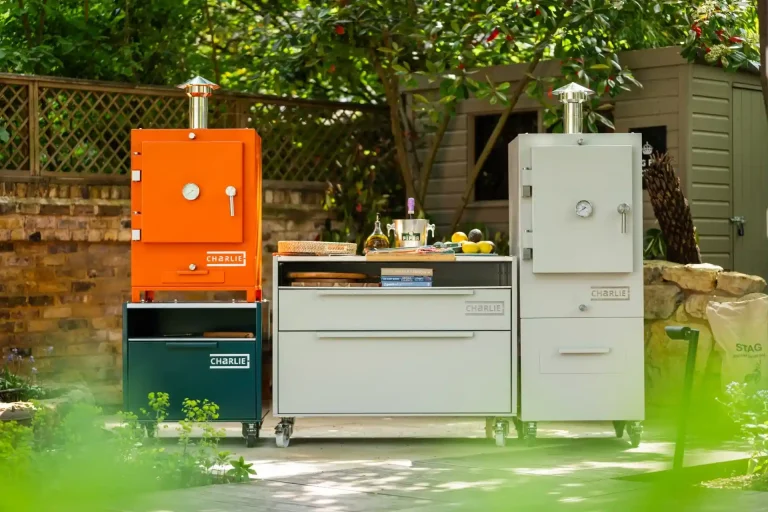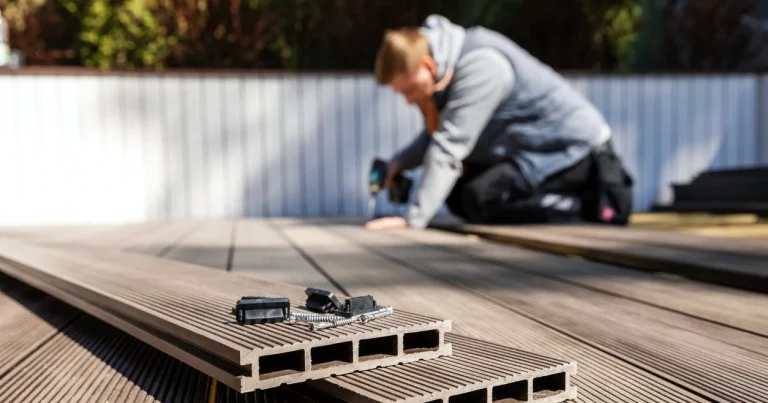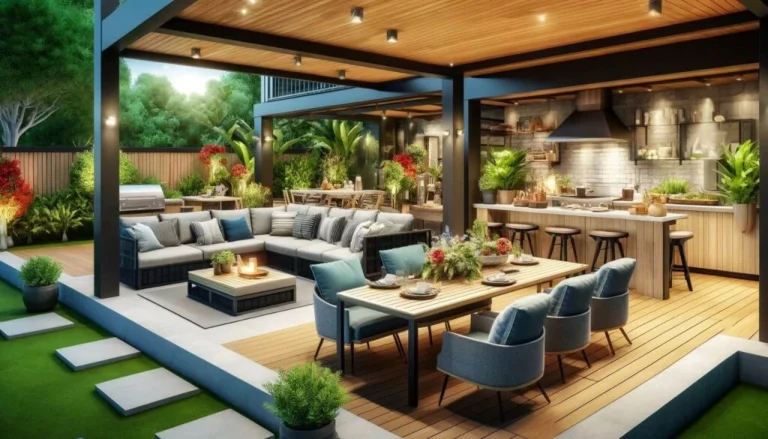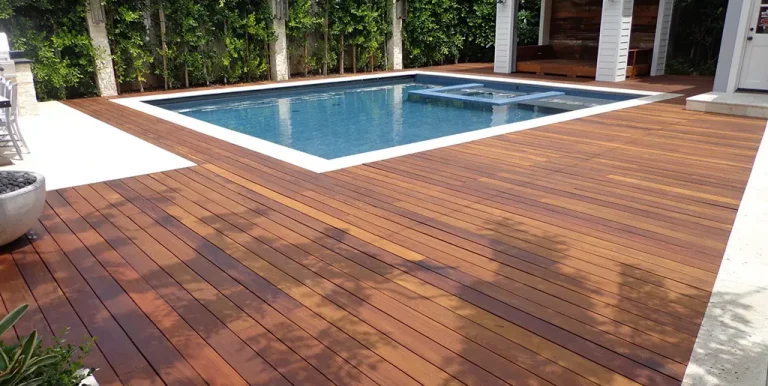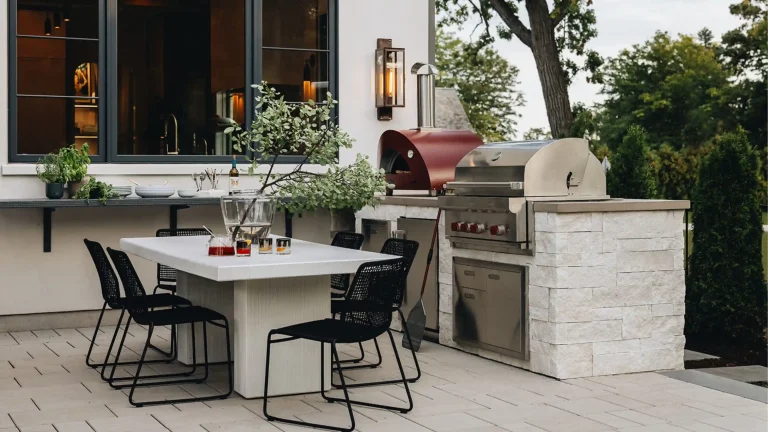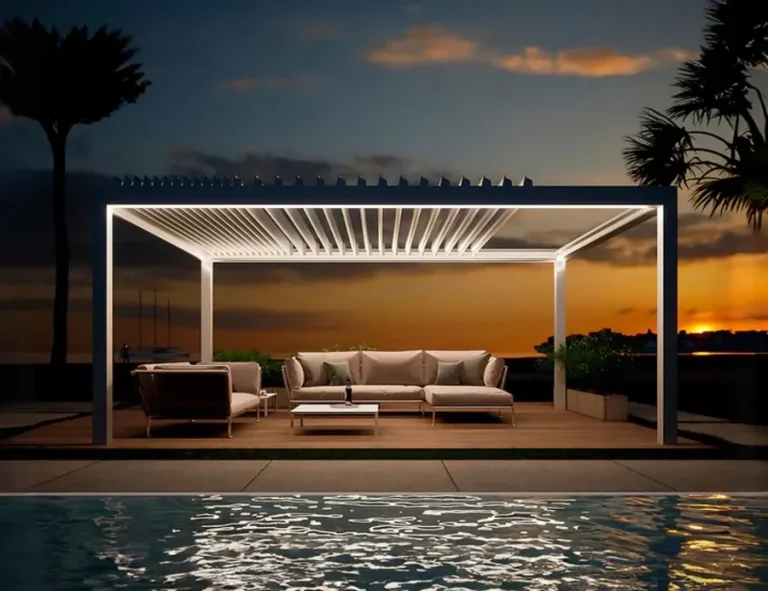Outdoor Kitchen Granite Countertops: Design, Benefits & Top Choices
Granite is one of the densest natural stone materials used for countertops, giving it superior durability and resistance compared to many other stone options. Because of its low porosity (when properly sealed) and ability to resist heat, weather, and UV exposure, granite is widely chosen for outdoor kitchen surfaces.
In outdoor applications, granite can handle thermal stresses, rainfall, sun exposure, and occasional mechanical impacts more reliably than softer stones. Its innate strength means it is less likely to crack under normal use, especially when supported properly. The natural beauty of granite with its unique veining, depth of color, and texture adds aesthetic appeal that complements landscaping, stonework, and outdoor furnishings.
Because granite is more resistant to fading from sunlight than many engineered stone surfaces (like quartz), it retains its appearance over the years outdoors. However, proper sealing and attention to installation details are essential to ensure longevity in outdoor settings.
Key Design & Installation Considerations
Thickness, Support & Structural Base
Granite is heavy, especially a thicker slab, so your outdoor kitchen island or base structure must be engineered to support the weight with minimal deflection. Use reinforced slabs, steel framing, or concrete foundations. Ensuring that the support is level, rigid, and durable is critical to preventing cracks or stress damage.
Using thicker slabs (e.,g. 3 cm or more) gives better resistance to breakage or warping under load. Pay attention to overhangs; cantilevers beyond the support should be limited unless reinforced with brackets or structural reinforcement.
Edge Profiles & Surface Finishes
Edge profiles (bullnose, beveled, eased) influence both aesthetics and risk of chipping. Rounded or eased edges tend to be safer outdoors. Also, surface finishes matter: polished granite looks beautiful, but may be too glossy and slippery in wet conditions. Honed or leathered finishes provide more grip and hide water marks or scratches better in outdoor settings.
Choose granite slabs with less heavy veining or minimal resins/epoxy fills, since fillers can degrade in sun exposure.
Sealing, Drainage & Water Management
Granite is not perfectly impervious; it requires periodic sealing to protect against staining, moisture ingress, and freeze-thaw damage. Incorporate slight slopes or breaks in the top surface to encourage water runoff. Avoid flat, puddling zones.
Design channels or overhang drip edges to protect cabinet faces or finishes from water drip. In climates with freeze/thaw cycles, ensure proper sub-surface drainage so water does not trap beneath the slab.
Thermal & Impact Considerations
Granite can handle high heat, and hot pans or tools can rest briefly without damage. But large thermal gradients (for instance, a hot grill flush against cold stone) may introduce stress. Allow for expansion joints or buffer insulation near heat sources.
While granite is strong, it can crack under heavy point loads or impacts (e.g., dropping a heavy item). Always use cutting boards, protect edges, and avoid standing on counters.
Benefits of Granite in Outdoor Kitchens
Exceptional Heat and Scratch Resistance
Granite is inherently capable of withstanding high temperatures, so placing hot pots and pans temporarily on its surface poses minimal risk of damage. Because it is a natural stone formed under extreme pressure and heat, it tolerates thermal stress better than many manufactured surfaces.
Additionally, granite is highly scratch-resistant everyday tools, utensils, and rough use rarely leave permanent marks. Its hardness protects it against wear over time when properly maintained.
Longevity & Durability Under Outdoor Conditions
Granite resists weathering from rain, wind, and UV exposure far better than many softer stone or wood alternatives. With minimal maintenance, it retains structural integrity over decades, making it a long-term investment in your outdoor living space.
Because of its density and low porosity (once sealed), granite is less prone to moisture absorption, leading to less risk of freeze/thaw damage or spalling.
Timeless Aesthetic Appeal
Each granite slab is unique; its veining, coloration, and texture provide natural beauty and luxury. Using granite in an outdoor kitchen conveys quality, permanence, and sophistication. Over time, it weathers gracefully.
Because granite doesn’t fade much under sunlight, its visual impact remains stable over time, especially when matched to complementary materials like stone veneer, pavers, or outdoor cabinetry.
Low Maintenance & Practicality
Compared to wood or concrete, granite requires less frequent maintenance. Periodic sealing and regular cleaning with mild soap suffice. No sanding or repainting is needed.
Spills are relatively easy to clean, and because cracks are rare in granite, there are fewer concerns about bacteria or mold intrusion if the slab is intact.
Adds Value & Perceived Quality
An outdoor kitchen featuring granite countertops signals high-end construction and finishes. In the real estate market, such features uplift property appeal. Granite’s durability and visual appeal reassure prospective buyers that the outdoor living area is built to last.
Because granite is a recognized premium material, it contributes to the “luxury” narrative of your property—and often justifies higher pricing for homeowners or contractors.
Top Examples of Granite Slabs Suitable for Outdoor Countertops
1. Granit Quadra Big Slab Calacatta Vecchia 320×160
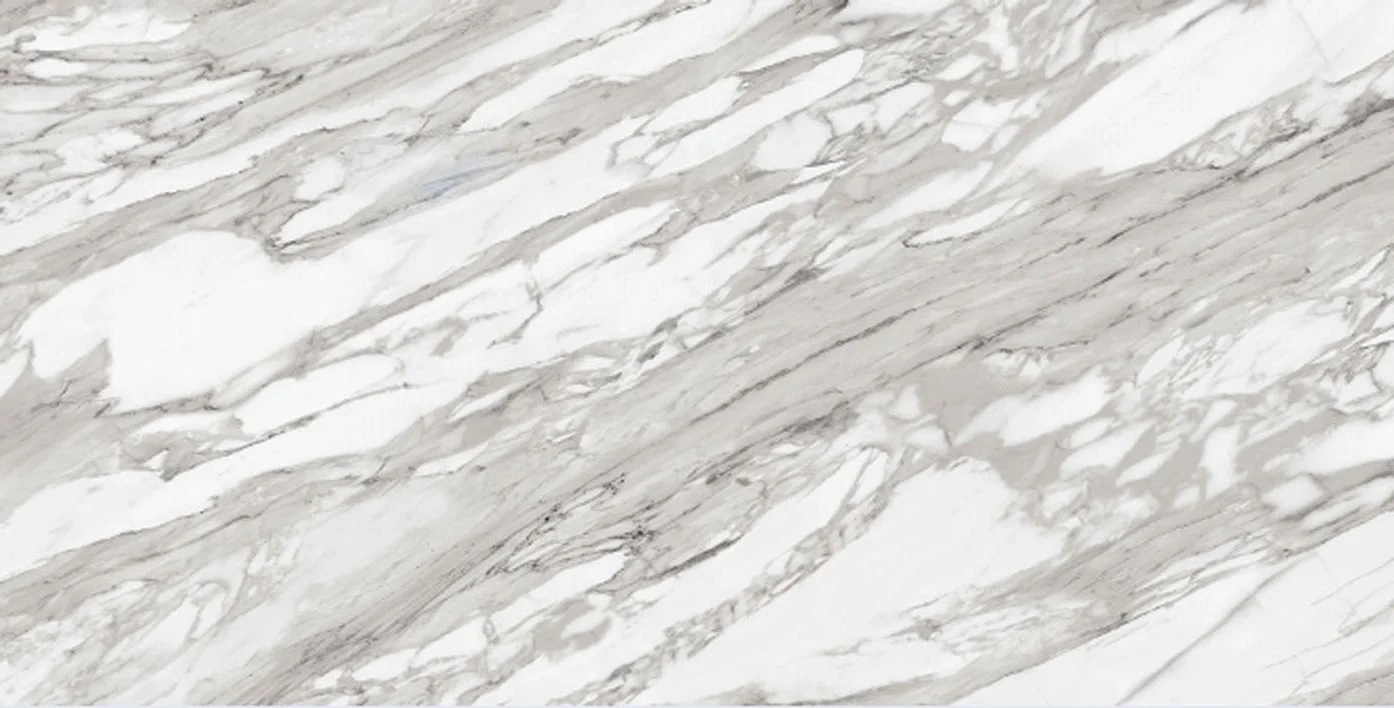
This Calacatta Vecchia slab offers striking creamy-white tones with dramatic veining. Its large format (320×160 cm) is well-suited for full-length counters in outdoor kitchens, minimizing seams. Its polished or honed finishes can be matched to outdoor aesthetics.
Because of its consistent pattern and lower epoxy usage, it’s easier to maintain under outdoor exposure. Use a honed or leathered finish outdoors to reduce glare and slip risk.
2. Granit Quadra Big Slab Nebula Grigio 320×160

Nebula Grigio features rich gray tones with elegant flecks and patterns. This neutral slab blends seamlessly with stone veneers, stainless steel appliances, and natural wood accents. Its large dimension reduces seams, which are weak points outdoors.
Given its medium tone, it hides dust and wear better than very light or dark surfaces, making it practical for active outdoor kitchens.
3. Bianco Romano Granite Slab 2cm
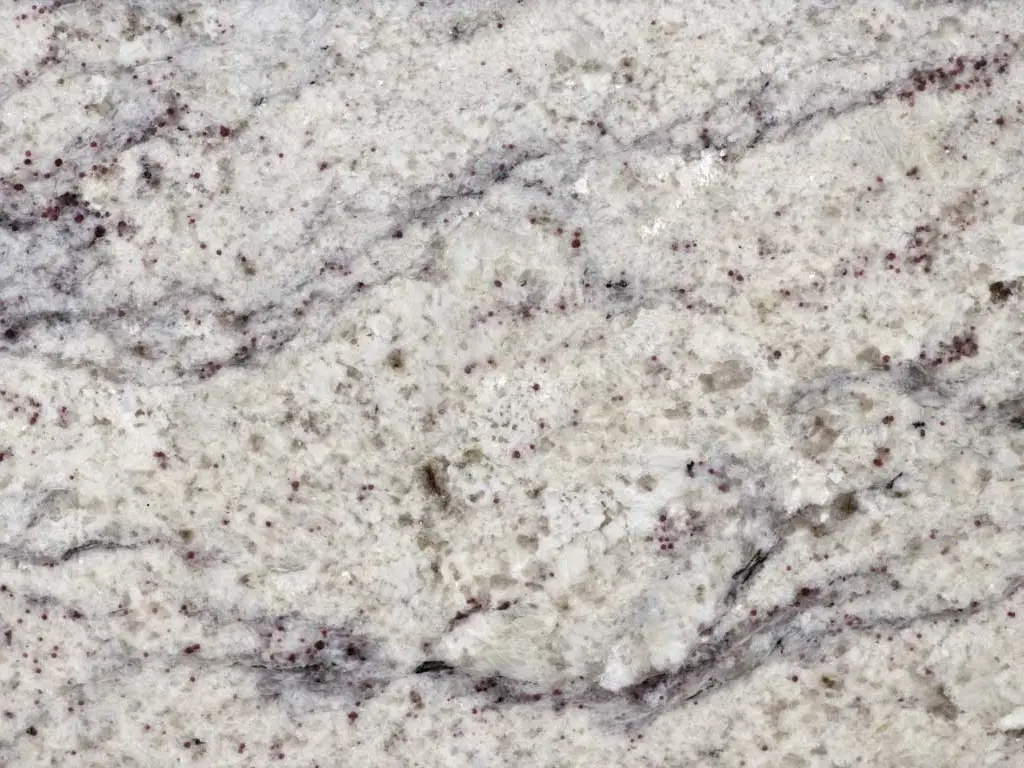
Bianco Romano is a classic creamy-beige/white granite that brightens outdoor kitchens. At 2 cm thickness, this slab is ideal where weight matters, but it still needs a sturdy base. The lighter tones help reflect heat and reduce surface temperature.
Use a sealed leathered or matte finish to avoid glare under direct sunlight. Because of its lighter appearance, it suits Mediterranean or coastal aesthetics.
4. Starstone White Granite Countertop
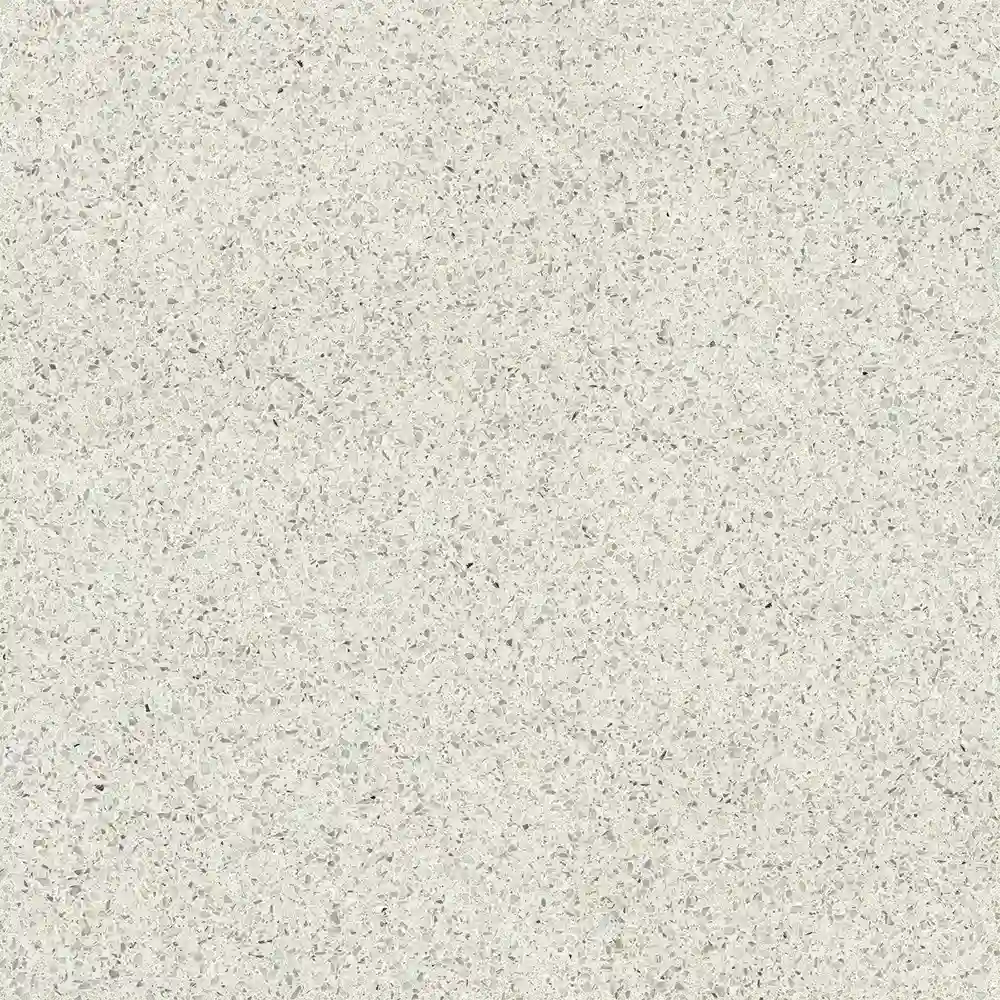
Starstone White offers a clean, crisp white appearance with subtle patterns. As a brighter slab, it brings contrast to darker cabinetry or stone surrounds. Its homogenous look works well for minimalist or modern outdoor kitchens.
Given its brightness, it may show stains more readily, so diligent sealing and care are necessary.
5. Granit Quadra Big Slab Nebraska Crema 240×120
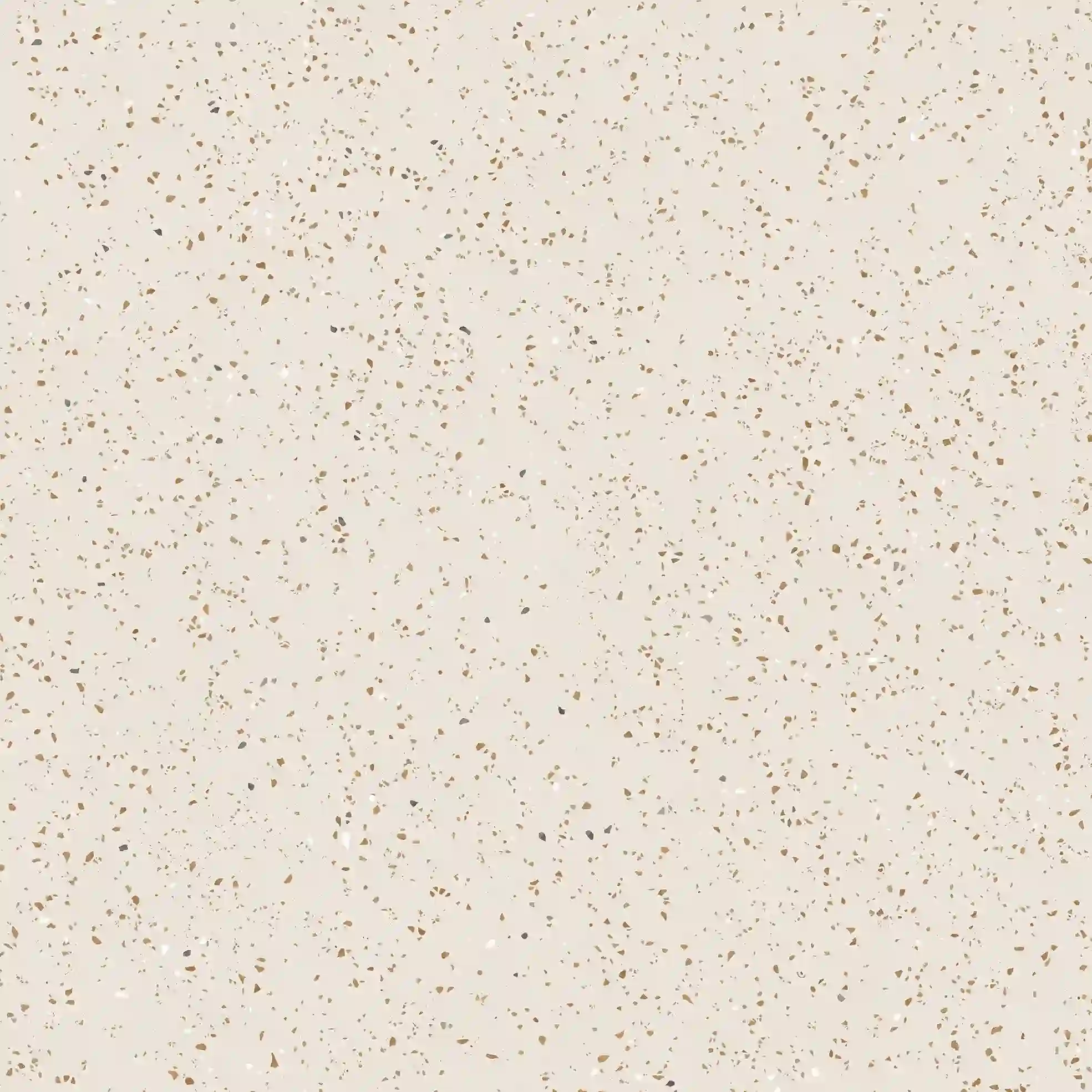
Nebraska Crema features warm wood-tone hues and creamy patterns. Though smaller in size (240×120 cm), it’s well-suited for shorter counters or partial coverage zones (e.g, bar serving areas). Its warm tones complement wood decking or composite surfaces.
This slab is a good choice for accent zones of refreshment counters where full-length matching isn’t required.
Use Cases & Problem Solving
All-Weather Cooking Zones
Outdoor kitchens endure sun, rain, and seasonal changes. Granite holds up under extreme heat, UV exposure, and moisture, solving the problem of surfaces degrading over time. It provides a reliable surface that remains stable when wood or composite may expand or warp.
Hot Grill, Cold Counter Compatibility
Near grills or fire pits, surfaces endure intense heat. Granite’s heat resistance allows hot pans or tools to be placed without damage (for short duration), solving concerns of scorching or warping that affect surfaces like laminate or wood.
Seam Minimization in Large Kitchens
In large or linear outdoor kitchen layouts, reducing seam joints is ideal for aesthetics and durability. Big slabs like 320×160 reduce the number of joints, minimizing weak points where water or debris intrudes.
Luxury & Visual Impact
In high-end homes, the outdoor kitchen is a focal point. Using premium granite slabs solves the issue of outdoor kitchens feeling “afterthoughts”; instead, they look as elegant as indoor spaces, reinforcing coherence with architecture, patios, and landscaping.
Low-Maintenance Outdoor Surfaces
In outdoor environments, wear, staining, and weather exposure challenge surfaces. Granite’s resilience and ease of cleaning solve the problem of surfaces deteriorating or requiring constant refinishing seen with wood, concrete stains, or tiles.
How to Buy & Where to Buy Granite Slabs for Outdoor Kitchens
Selecting & Sourcing
-
Request full-slab samples (not just small chips) to confirm veining, pattern, and epoxy presence.
-
Ask the supplier about UV-stable sealers and recommended sealing frequency.
-
Prefer slabs with minimal epoxy or filler, as those can degrade over time in sunlight.
-
Match slab dimensions closely to the kitchen layout to minimize seams.
Installation & Fabrication Tips
-
Use high-quality adhesive and anchors rated for outdoor stone use.
-
Provide full support beneath the slab, no single-point cantilevers without reinforcement.
-
Leave expansion or control joints near fixed structures to accommodate thermal movement.
-
Seal all edges, seams, and undersides to block moisture infiltration.
-
Consider a matte or honed finish to reduce glare and enhance slip resistance.
Where to Buy / Sample Affiliate Links
You can source outdoor-grade granite through stone fabricators, premium countertop retailers, or specialty online slab suppliers. Always verify shipping, handling (crating), and warranty policies, especially for large slabs.
Maintenance & Long-Term Care
Routine Cleaning
Use mild dish soap with warm water and a soft cloth or sponge. Rinse thoroughly and dry to prevent mineral spots. Avoid acidic or abrasive cleaners; they may erode sealant or scratch the surface.
Sealing Maintenance
Depending on climate and usage, reseal the granite annually or every two years. Test by placing a few drops of water: if it beads, the seal is intact; if it soaks in, resealing is due.
Repairing Minor Damage
Small chips or scratches can often be repaired using colored epoxy dust mixed with resin. Larger structural cracks may require professional restoration. Avoid standing or impacting edges heavily.
Protecting from Extreme Conditions
In areas with freeze-thaw cycles, cover outdoor kitchens during cold months or ensure drainage under slabs. Use UV-stable sealers that resist yellowing. Minimize direct sunlight where possible with pergolas or overhangs.
Frequently Asked Questions
Q1: Will granite fade or discolor outdoors?
Granite is relatively resistant to UV exposure and typically holds its color over time. However, improper sealing or inferior fillers/epoxies may discolor. Select high-quality slabs and maintain sealing to protect against fading.
Q2: Can I place hot grill grates or pans directly on granite?
Granite tolerates heat well and can handle hot objects briefly. However, avoid repeated thermal shock or large temperature differences. Use trivets or buffer zones near grills to reduce stress.
Q3: How often do I need to reseal granite in an outdoor kitchen?
Typically, once a year to every two years, depending on climate and usage. Use the water-drop test: if water no longer beads on the surface, it’s time to reseal.
